In constructing her first Cabinet, Nicola Sturgeon has shown a commitment to sending ‘a strong, positive message to girls and young women’
Nicola Sturgeon recently announced her new Cabinet. Following her selection as Scotland’s first female First Minister, she told the Scottish Parliament that she hoped her presence in the top job would send ‘a strong, positive message to girls and young women – indeed, to all women – across our land’. But, asks Emily Andrews, is the composition of her Cabinet, and her Party, sending the same message? And is the SNP winning the race to become the most representative party in Scotland?
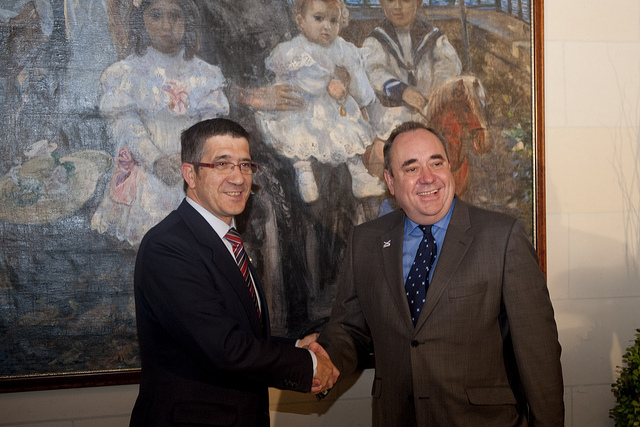
Credit: Irekia, CC BY 2.0
Before we get on to gender, let’s see who is in, and who is out. Two long-serving Cabinet Secretaries (as Cabinet ministers are called at Holyrood) Kenny MacAskill and Michael Russell have been removed. There are three secretaries who are new to Cabinet entirely: Michael Matheson, Keith Brown and Roseanna Cunningham.
John Swinney has become the new Deputy First Minister retaining his position as Secretary for Finance. Alongside Sturgeon and Swinney, two other members of the first SNP Cabinet from 2007 remain, Fiona Hyslop and Richard Lochhead
Scottish Cabinet reshuffle: some old, some new.
Not too many changes then. The reshuffle chart looks more dynamic, because of the ease with which portfolios and titles can change under the Scottish system. Under the Scottish model there are no departments in the Whitehall sense: instead each Cabinet Secretary is responsible for a portfolio which cuts across various policy directorates, and loosely corresponds with the core strategic objectives of the Scottish government. This can lead to subtle changes in responsibility: for example, Shona Robison has taken Sport with her from her previous portfolio, into her new role in charge of health and wellbeing.
Alex Salmond made no changes to Cabinet Secretary portfolios during his first term as First Minister after 2007, but as the chart above shows, he has made some significant changes to the structure of his Cabinet since 2011. Two new posts were added to Cabinet as late as April this year, when two junior ministerial positions were promoted to full Cabinet posts. Sturgeon has altered the responsibilities attached to those posts, but has retained a larger cabinet size of ten. A small, co-ordinated cabinet was a key principle of the new government structure forged by the SNP and then Scottish Permanent secretary Sir John Elvidge in 2007. This could be seen as a move away from the principle of a small, co-ordinated Cabinet which was key to the restructure of the machinery of Scottish government which the SNP and then Scottish Permanent Secretary Sir John Elvidge undertook in 2007.
The Scottish Cabinet is now 50% women.
Sturgeon’s new cabinet has a 50/50 gender split, making it the most representative Scottish Cabinet ever. Although a 60/40 split was achieved in 2007, the smaller Cabinet has been mostly dominated by men. In December 2009, after Fiona Hyslop resigned as Secretary for Education, there was only one woman left in the Cabinet: Sturgeon herself.
The gender balance shifted considerably in April 2014 when Alex Salmond promoted two female junior Ministers – Shona Robison and Angela Constance – to Cabinet. This was, he said, an example to Scottish companies, who he hoped would aspire to a 60/40 gender split on their boards in an independent Scotland. At that time, both new Cabinet Secretaries retained their previous junior ministerial portfolios, with no added responsibility, but they have now been given much more substantial roles: Robison has been given charge of Health, and Constance of Education.
The proportion of women in the Scottish Cabinet is higher than in the UK Cabinet.
Sturgeon’s reshuffle has left the UK cabinet trailing behind in terms of gender equality. In 2009, David Cameron made a more modest pledge of having 1 in 3 ministerial positions – including junior ministers – filled by women, a pledge he came close to fulfilling following his reshuffle in July. Currently, women make up 23% of full cabinet ministers, and 29% of those who attend cabinet. The UK cabinet is also, of course, over twice the size of the Scottish Cabinet (10 Scottish Cabinet secretaries as opposed to 22 full UK Cabinet ministers).
As we noted after the last major UK Cabinet reshuffle in July, the proportion of women in the UK Cabinet (23%) is greater than the proportion of female MPs in the coalition parties (15%). As the chart above shows, the same pattern holds true in the Scottish case, but the gap is even greater: 50% of the Scottish Cabinet is female, compared to only 26% of SNP MSPs. This could cause problems of supply going forward: if the SNP wishes to keep to Salmond’s pledge, it will need to improve the representation of women throughout the Scottish Parliament.
Not to be outdone, Scottish Labour leadership candidate Jim Murphy announced last weekend that, if he were elected First Minister, 50% of his Scottish Cabinet would be women. If the gender mix of a Scottish Labour majority government were similar to the make-up of the parliamentary party at present, Murphy would have much easier job than Sturgeon. At the moment, there is already an almost an equal proportion of men and women amongst Labour MSPs: 18 women and 20 men.
In constructing her Cabinet, Nicola Sturgeon has shown her commitment to sending ‘a strong, positive message to girls and young women’. We will have to wait to 2016 to see if that commitment will translate into a similar recalibration of the gender balance of the SNP’s share of the Scottish parliament.

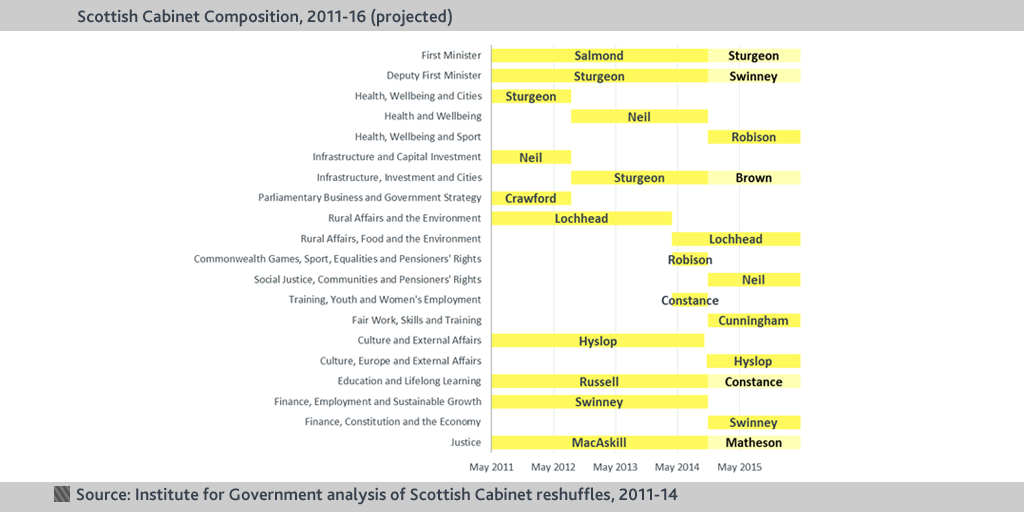
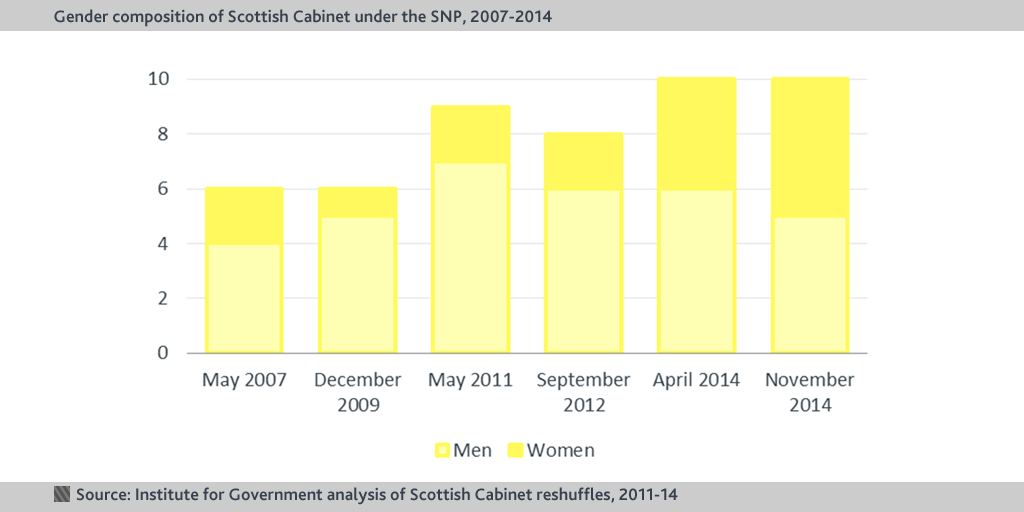
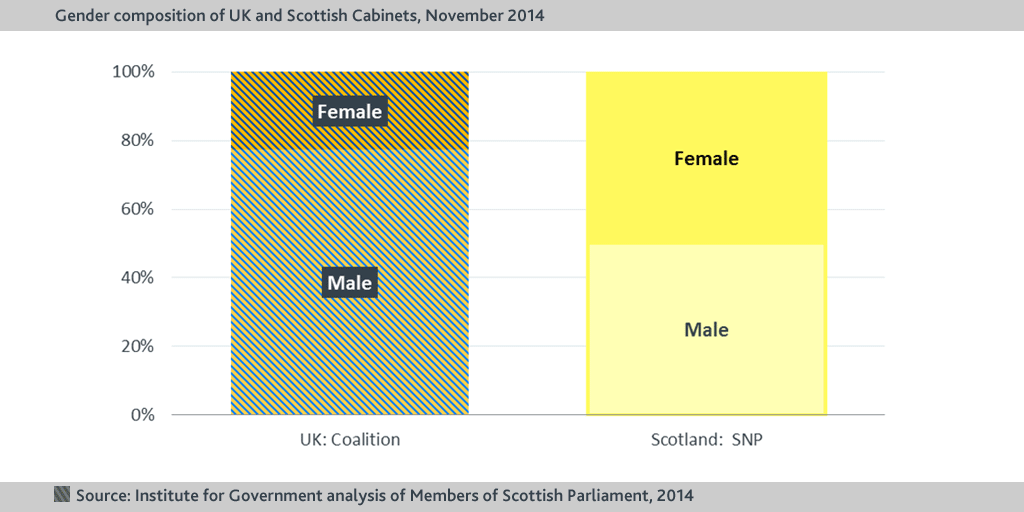
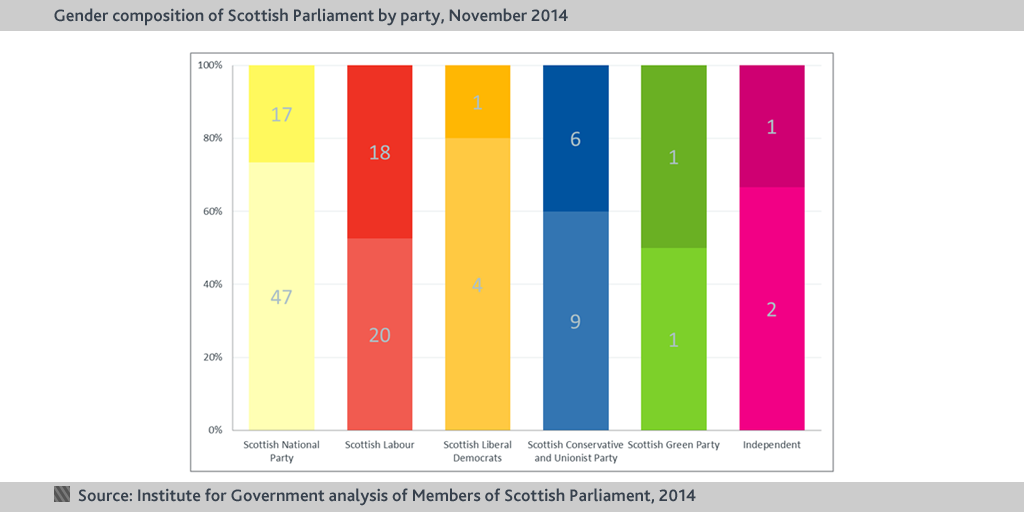





 Democratic Audit's core funding is provided by the Joseph Rowntree Charitable Trust. Additional funding is provided by the London School of Economics.
Democratic Audit's core funding is provided by the Joseph Rowntree Charitable Trust. Additional funding is provided by the London School of Economics.
Has Sturgeon shown a commitment to sending ‘a strong, positive message to girls and young women’ w/ her new Cabinet? https://t.co/LYS2f67riT
Nicola Sturgeon has shown a commitment to sending ‘a strong, positive message to girls and young women’ https://t.co/CL00EKV6qz
” Has Nicola Sturgeon shown a commitment to sending ‘a strong, positive message to girls and young women’?” https://t.co/Lb8sG6s35d
Has Nicola Sturgeon shown a commitment to sending ‘a strong, positive message to girls and young women’? https://t.co/5czm98TQhP
Nicola Sturgeon’s Cabinet: a commitment to sending ‘a strong, positive message to girls and young women’ https://t.co/szlyEmPbIy
In constructing her first Cabinet, Nicola Sturgeon has shown a commitment to sending ‘a strong, positive message… https://t.co/pIm8aTZFRf
In constructing her first Cabinet, Nicola Sturgeon has shown a commitment to…’ https://t.co/ORpVX0h0FG
Nicola Sturgeon’s first SNP Cabinet sends a clear message about gender equality in Scotland. https://t.co/p5j8KcqRWY https://t.co/nfknrSkRip
Gender split in Scottish cabinet (nearly) matches population for the first time https://t.co/Eij9V29wEx
In constructing her first Cabinet, Nicola Sturgeon has shown a commitment to sending ‘a strong, positive message to… https://t.co/9XRKC6bTHi
@LGA_Independent @democraticaudit: Nicola Sturgeon’s first cabinet sets equality standards for women in politics. https://t.co/nCrBUJWUwP”